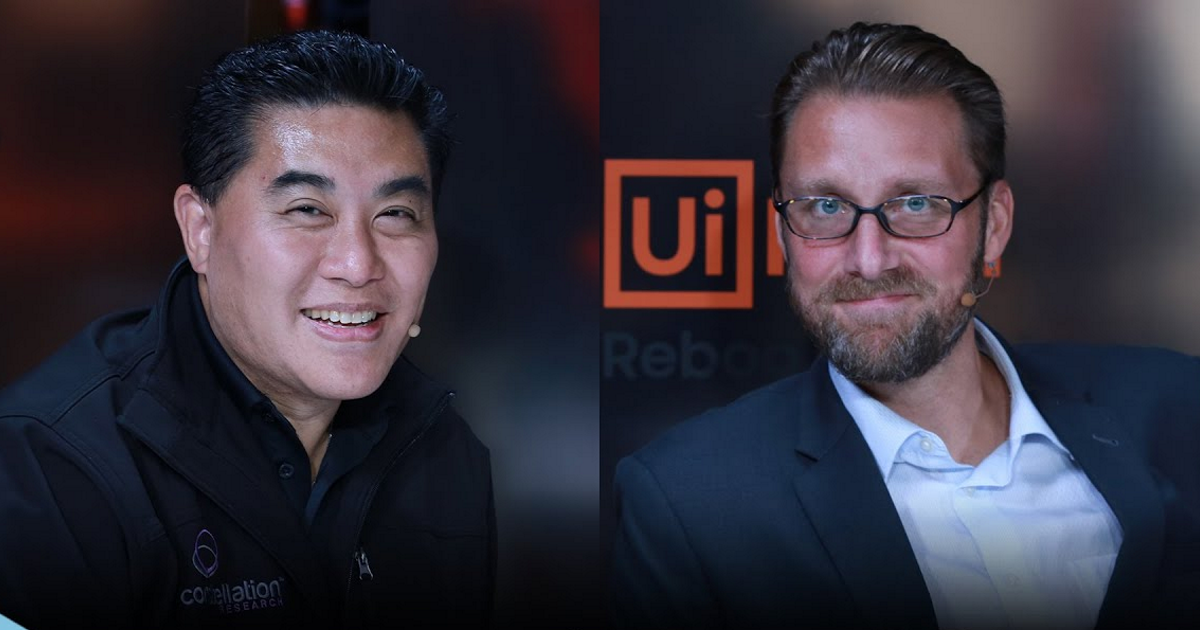 AI
AI
 AI
AI
 AI
AI
Everyone is aware of the Great Resignation happening across the globe. Workplace culture is changing, and employees are questioning the reasons they go to work while companies are searching for ways to recruit and retain top talent.
Research conducted this year shows that how a business takes care of its employees directly affects profitability, with those focused on optimizing their employee experience four times more profitable than those who didn’t.
“I don’t know if it’s a Great Resignation — we call it a great refactoring,” said R ‘Ray’ Wang (pictured, left), founder, chairman and principal analyst at Constellation Research Inc. “Where you work, when you work, how we work, why you work, that’s changing. But, more importantly, the business models are changing. The monetization models are changing. There are macro dynamics that are happening … and I think it’s going to reshape us.”
Wang and Pascal Bornet (pictured, right), best-selling author in AI and automation and chief technology evangelist at Aera Technology, spoke with theCUBE industry analysts Dave Vellante and David Nicholson at UiPath Forward, during an exclusive broadcast on theCUBE, SiliconANGLE Media’s livestreaming studio. They discussed the future of work and the role of intelligent automation in digital transformation. (* Disclosure below.)
The cultural changes occurring in the workplace can be attributed to the COVID pandemic on both a personal and a technological level. The pandemic made people reevaluate their priorities, and it also catalyzed digital transformation. There’s even a joke about it: Who most accelerated your digital transformation over the last few years — your CEO, CDO or COVID?
Automation has become a fundamental part of digital transformation, joining with analytics and artificial intelligence to create the concept of “decision velocity,” according to Wang.
“You and I make a quick decision, boom. How long does it take to get out of the management committee? Could be forever, right? A week, two months, never. But if you’re thinking about competing with automation, these decisions are being done 100 times per second by machine, even 1,000 times per second. That asymmetry is really what people are facing at the moment,” he said.
In his book “Intelligent Automation,” Bornet discusses the differences between IA, which is also known as hyperautomation, and RPA.
Organizations attempting to digitally transform using only basic RPA fall short of the benefits that can be obtained, according to Bornet.
“A lot of those processes need more than execution. They need language, they need the capacity to view, to see, they need the capacity to understand and to create insights,” he said.
Adding AI to RPA brings the ability to add natural language processing and computer vision and enables the automation of end-to-end processes. This is the future of work, according to Bornet, and it’s a future that made the headlines at UiPath Forward.
“We’re talking about where does automation go?” Wang said. “How do we get the decisioning? What’s the next best action? That’s going to be the next step.”
Here’s the complete video interview, part of SiliconANGLE’s and theCUBE’s coverage of the UiPath Forward event:
(* Disclosure: TheCUBE is a paid media partner for the UiPath Forward event. Neither UiPath, the sponsor for theCUBE’s event coverage, nor other sponsors have editorial control over content on theCUBE or SiliconANGLE.)
THANK YOU